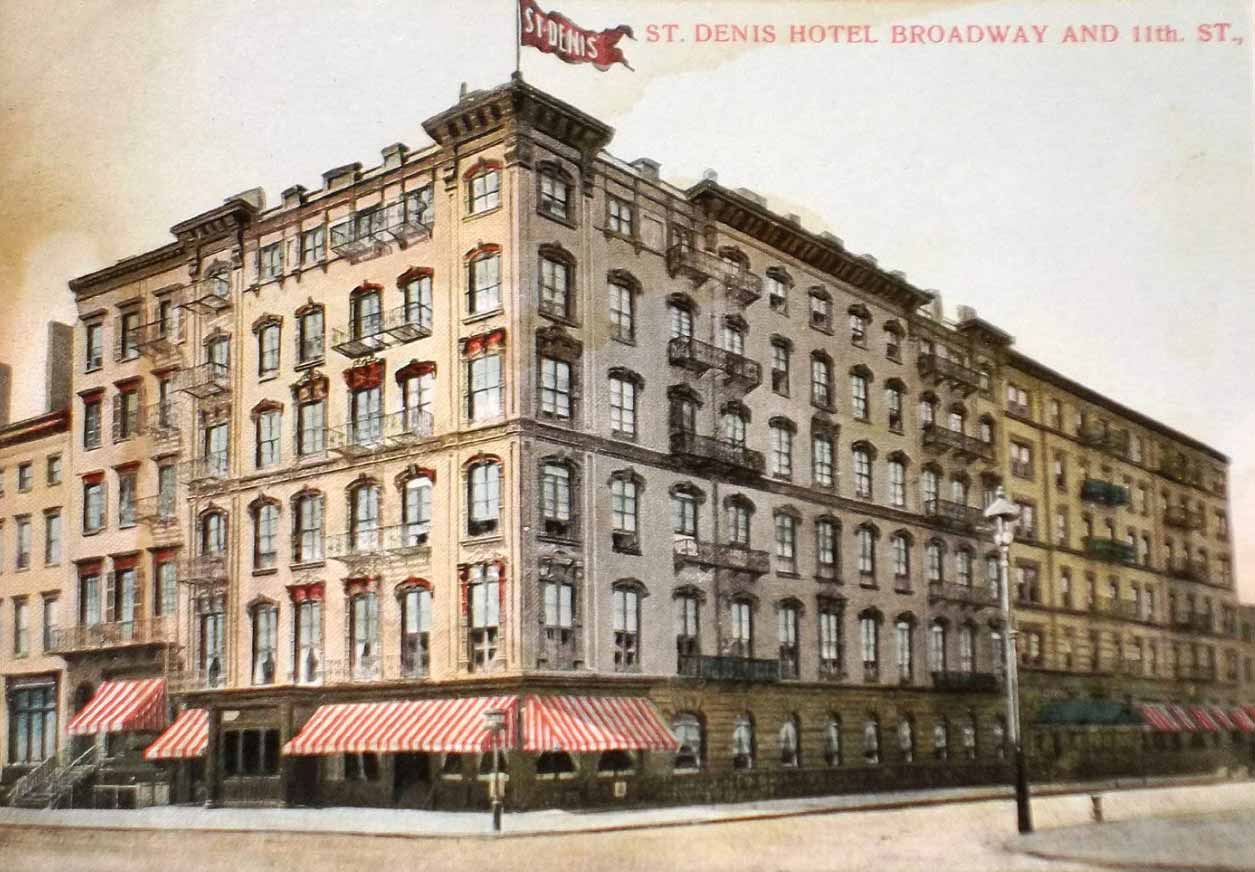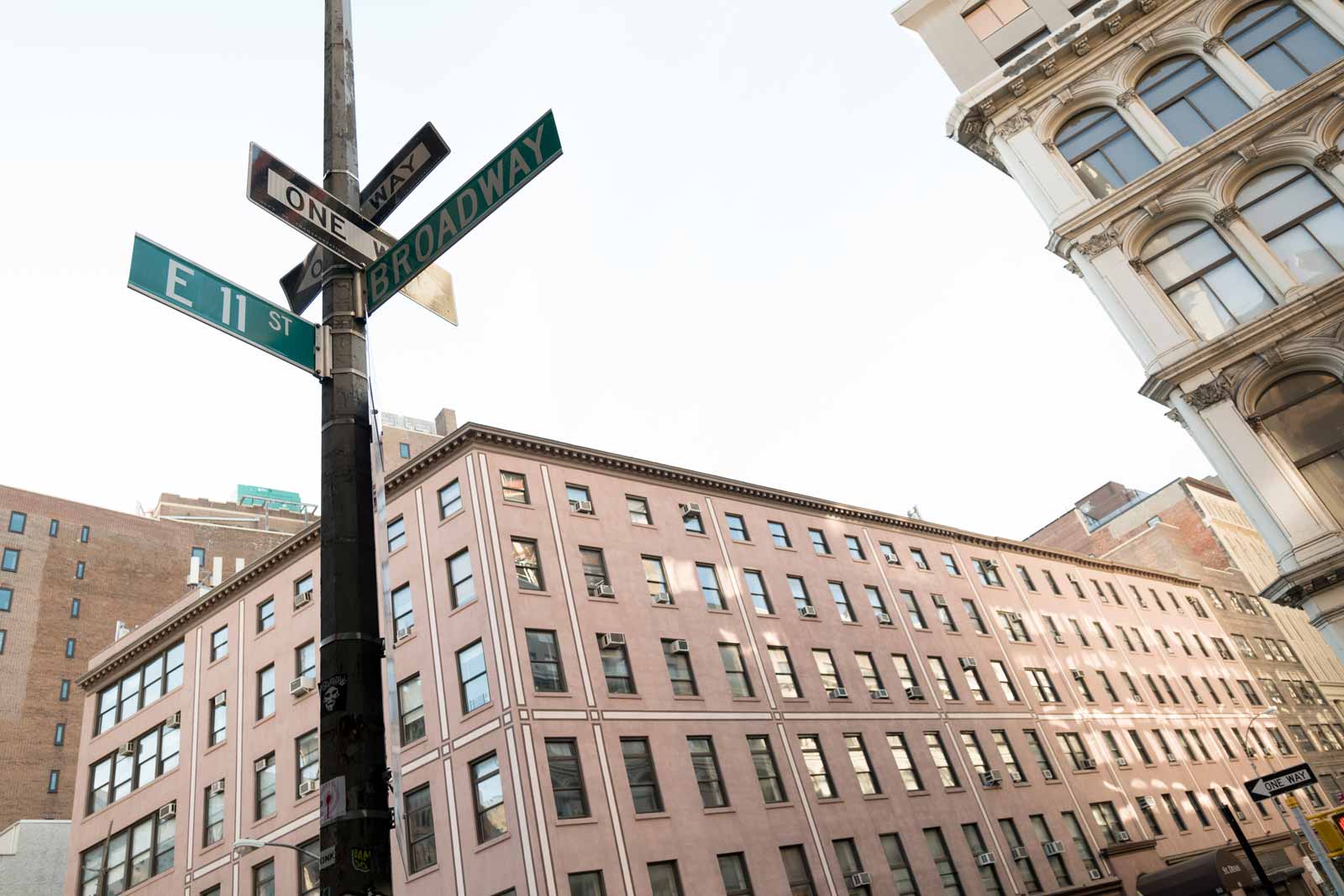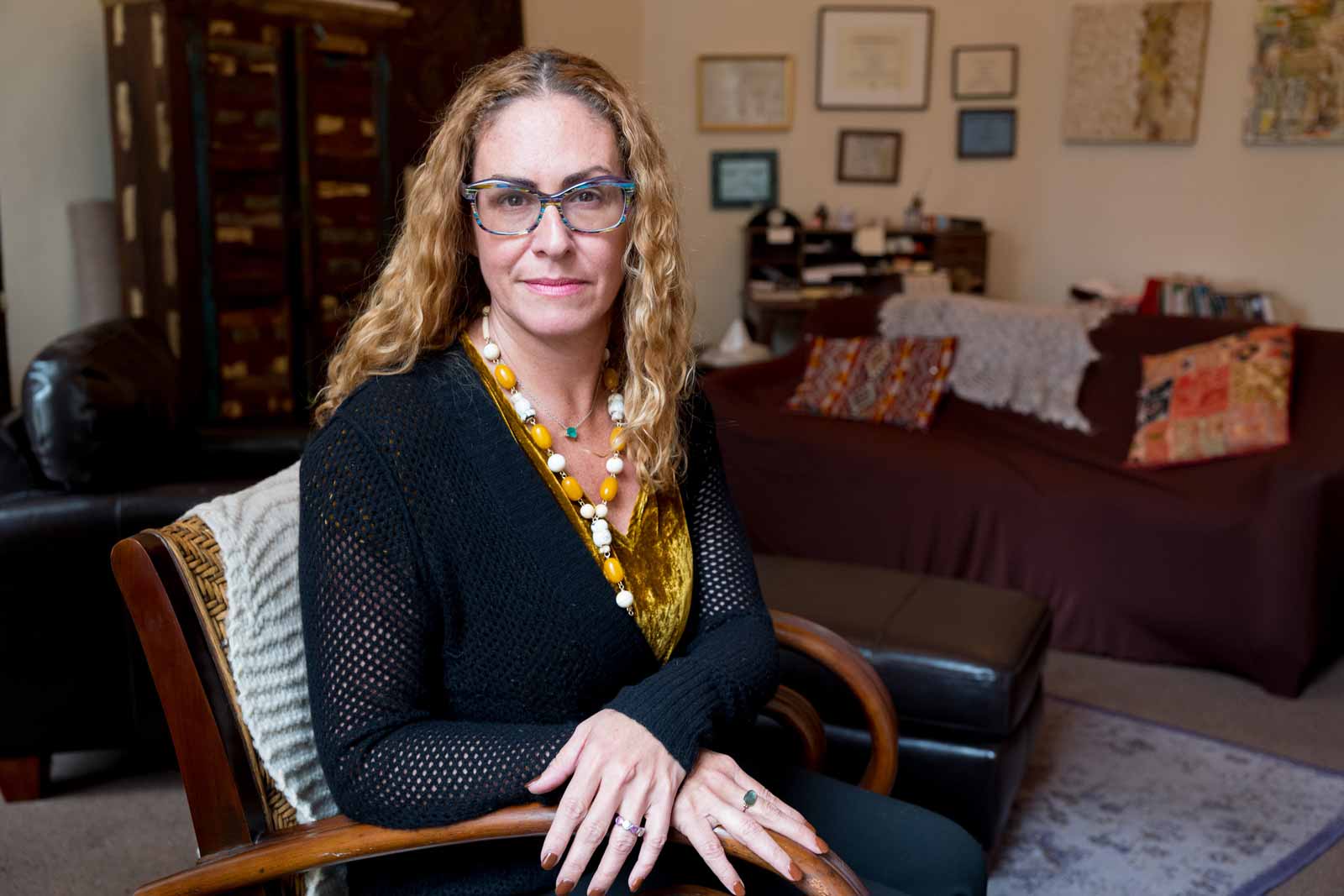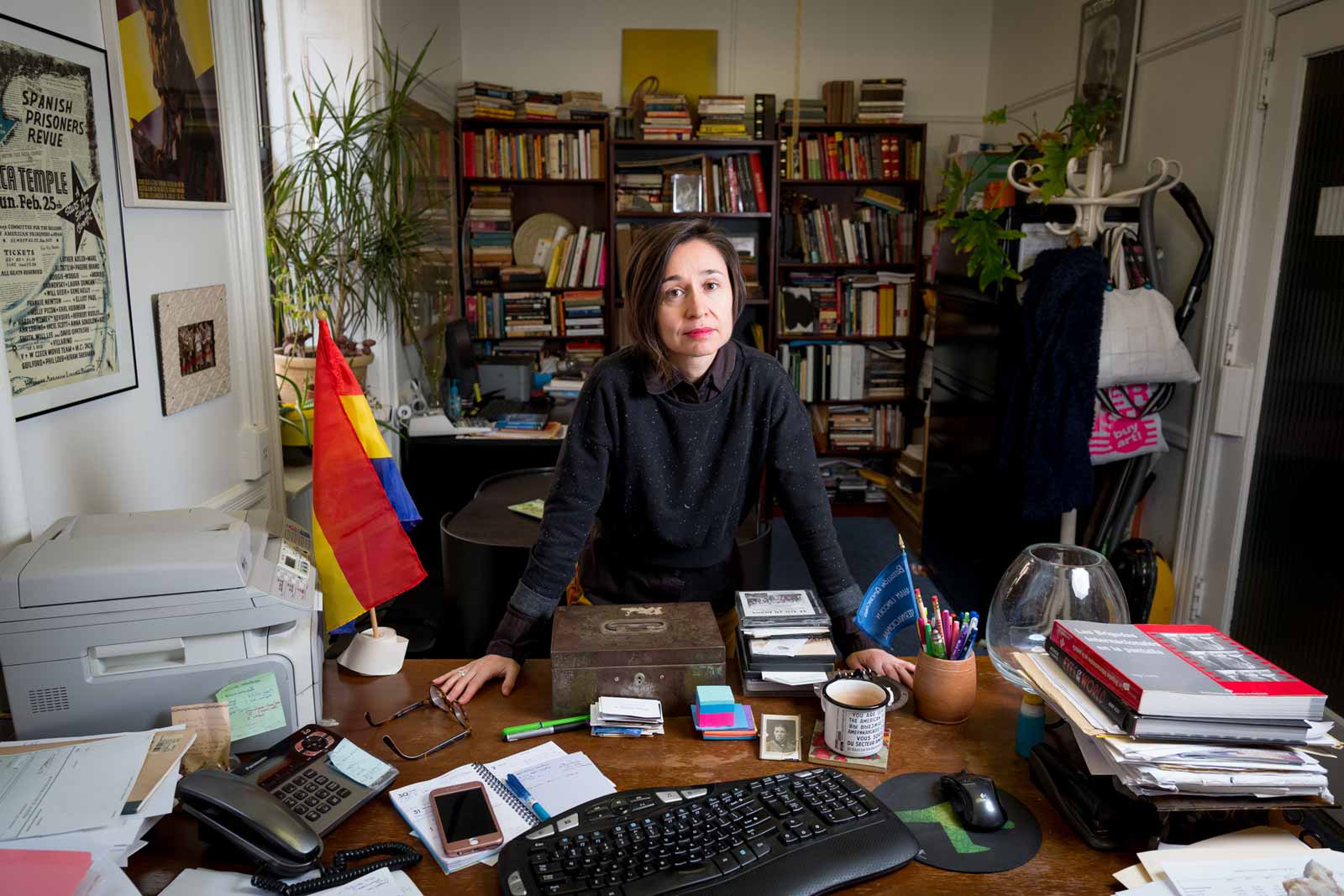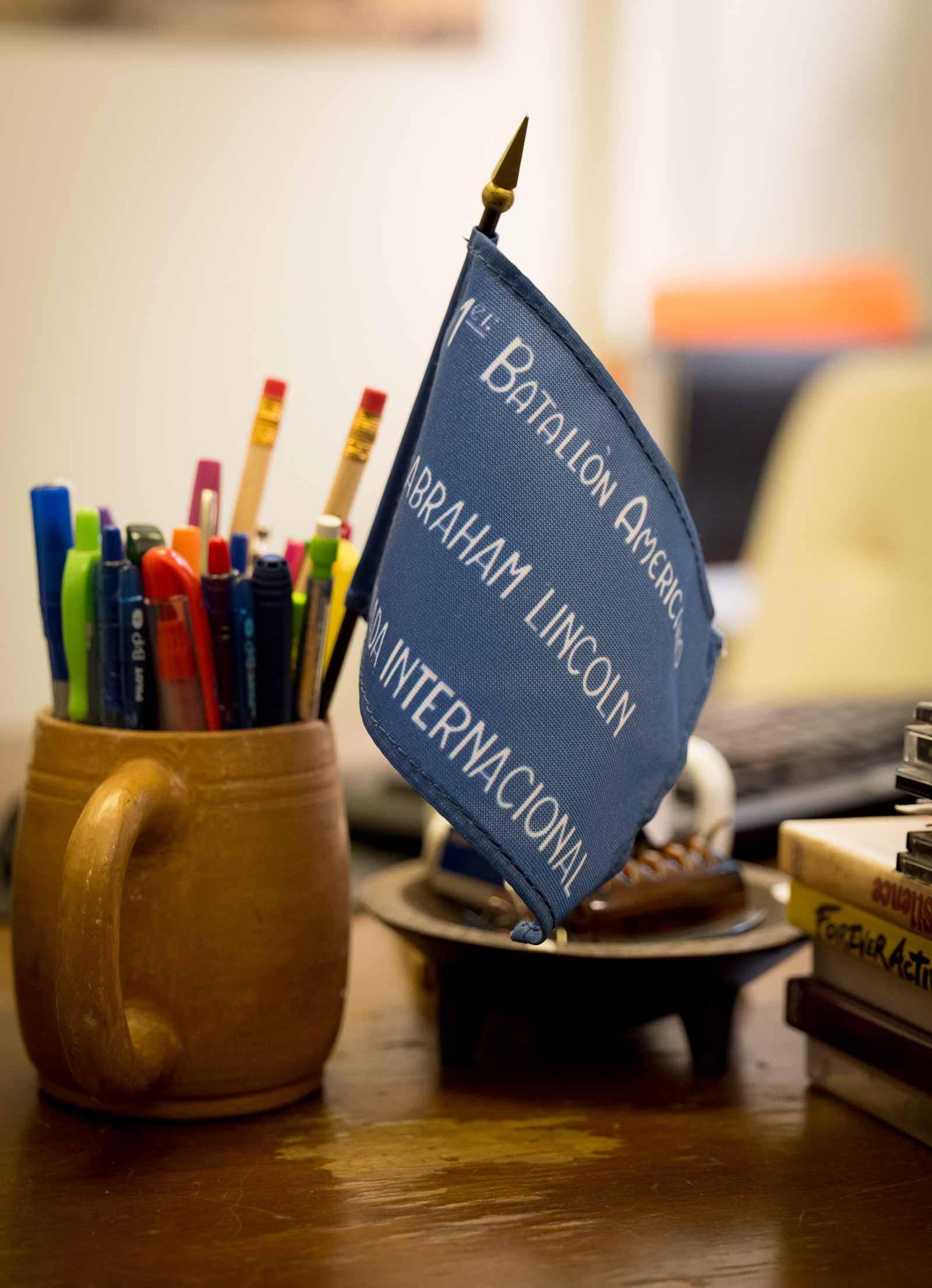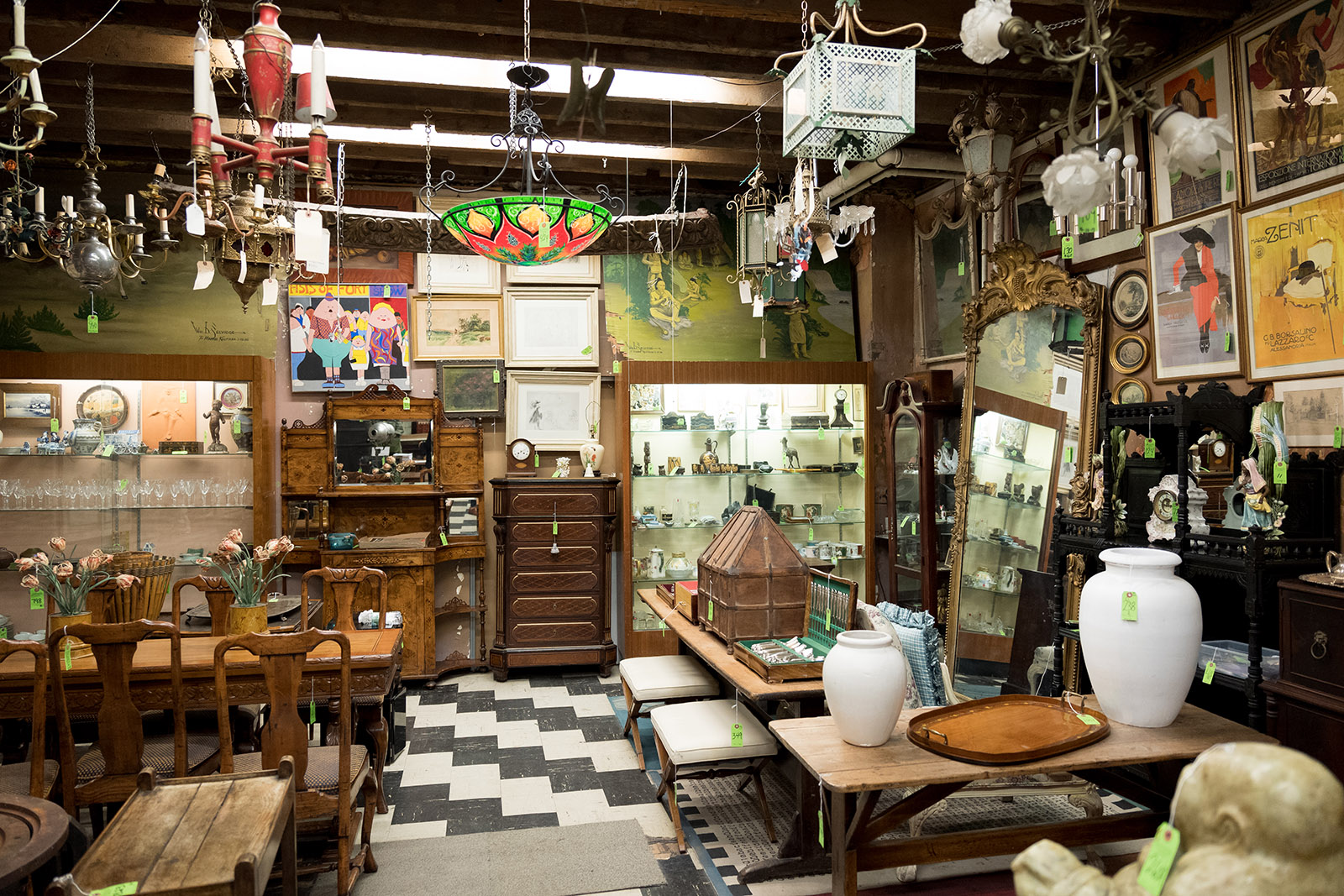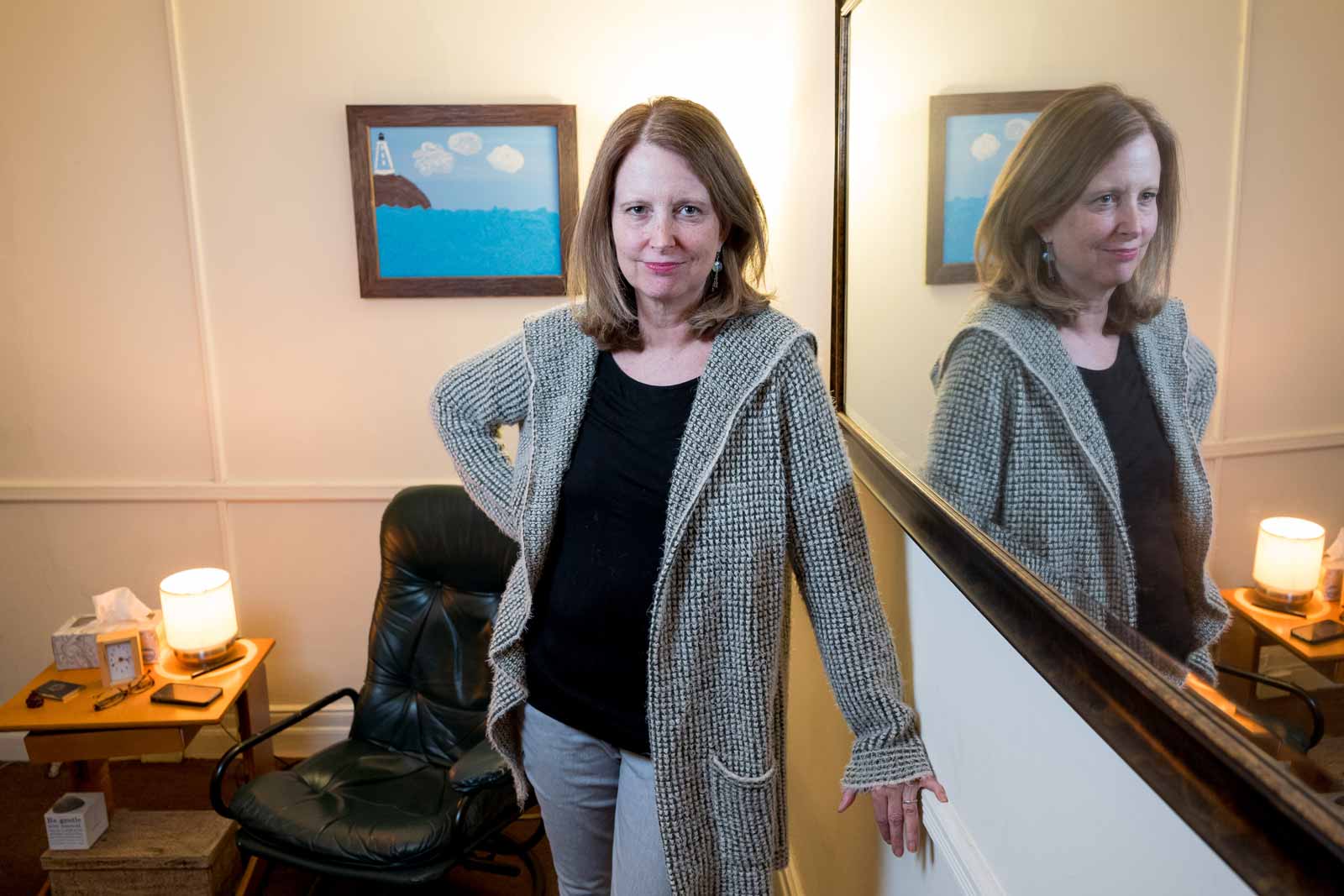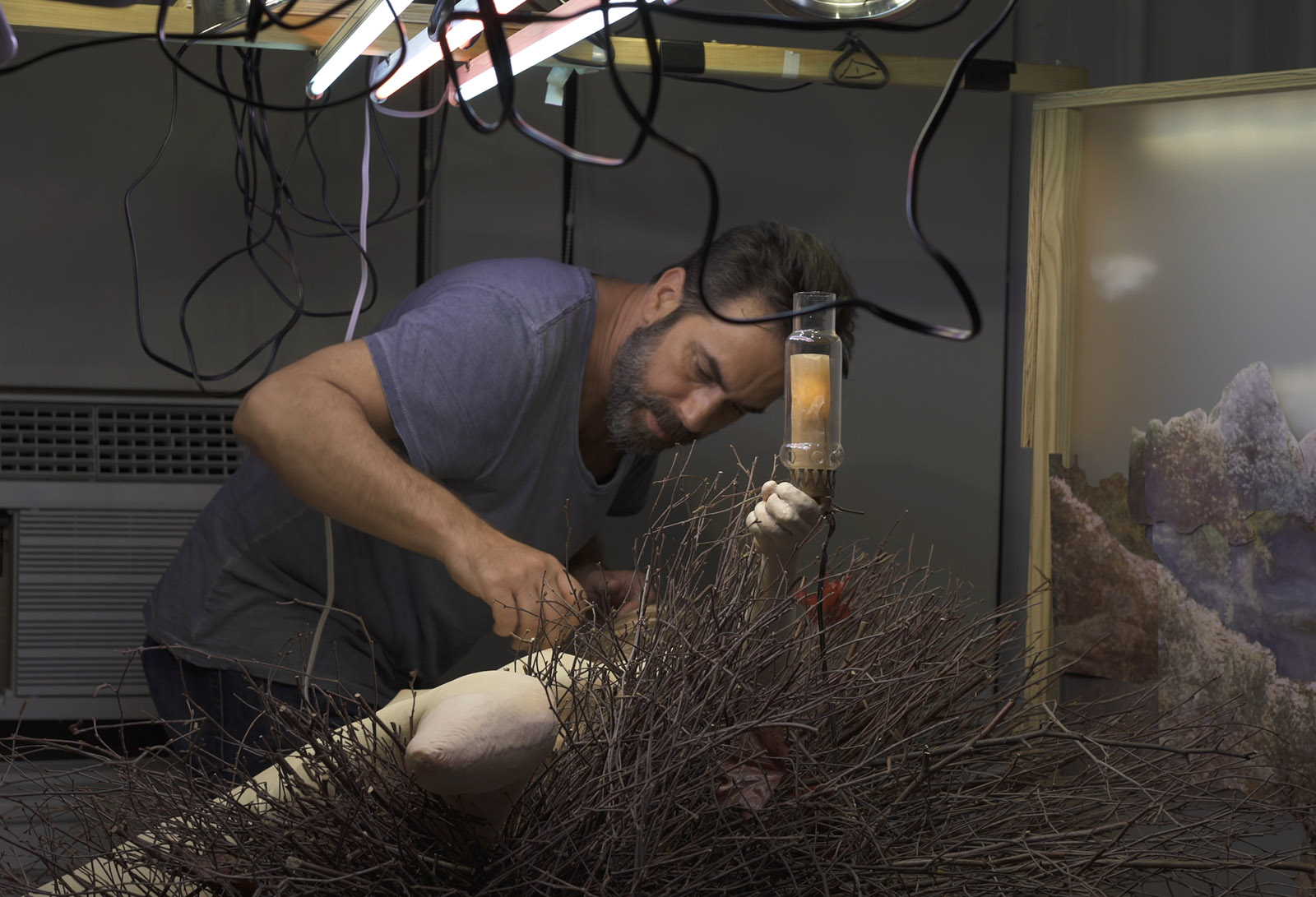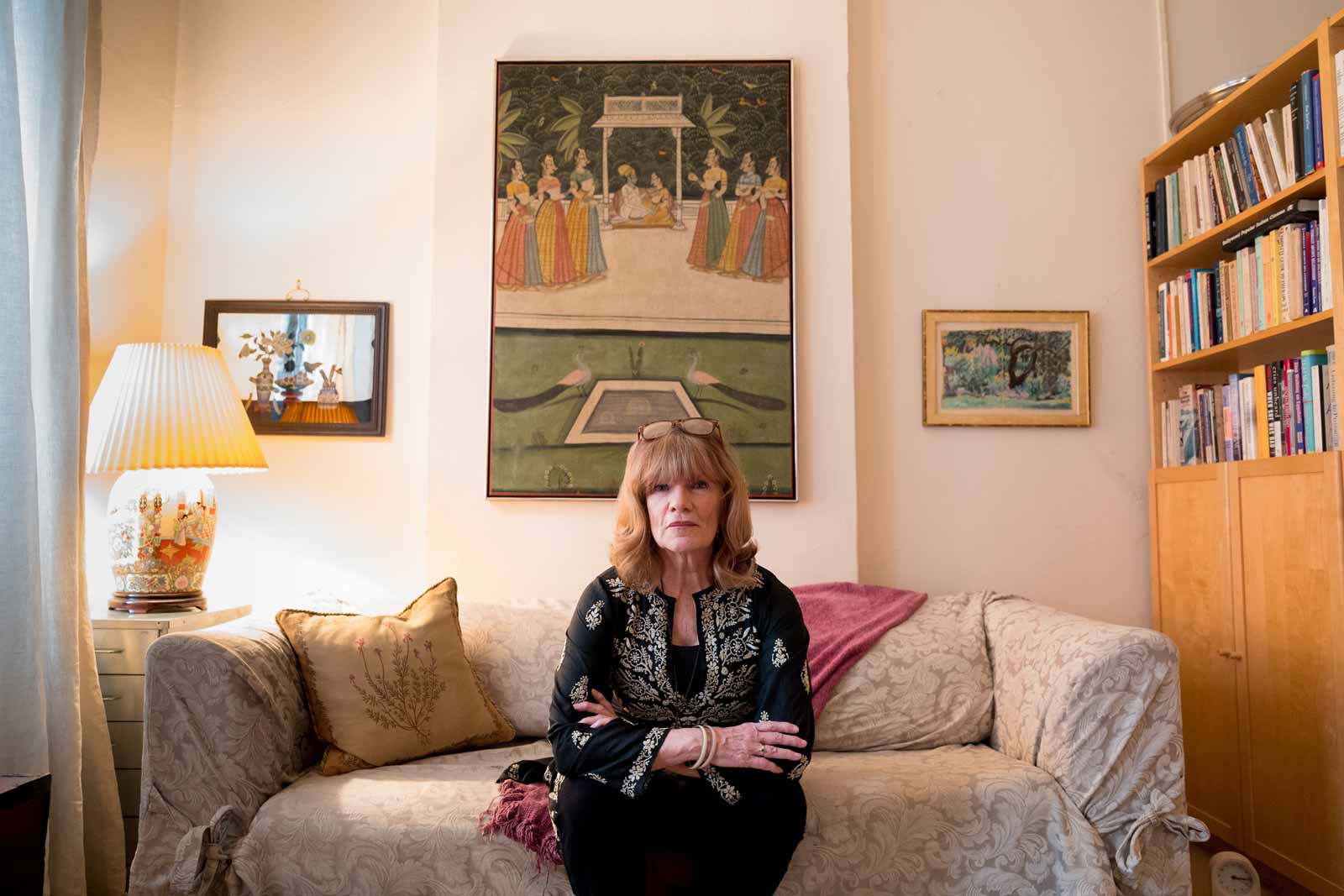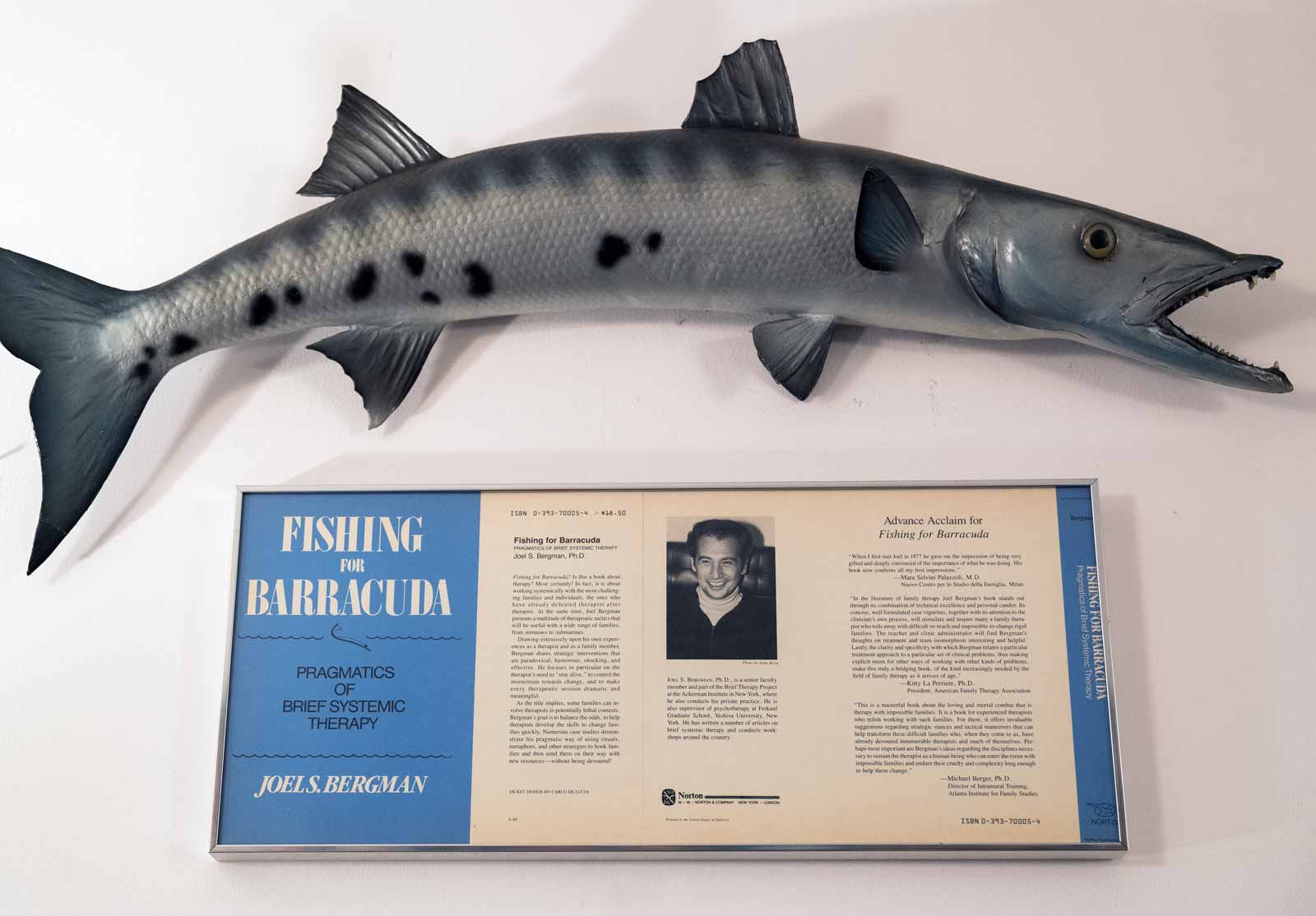I am one of the last tenants of the St. Denis, a 165-year-old building on the corner of Broadway and East 11th Street, just south of Union Square in New York City, that is in the process of being emptied and readied for gutting. It is quiet in my office, early morning before my psychotherapy patients arrive. My four large windows overlook a courtyard and the angled back sides of three buildings, their walls a geometric patchwork of brick. Pigeons purr on a sill. In the NYU dormitory across the way, a student has decorated her window with paper snowflakes. It is winter and I hope to see a real snowfall one more time before I go. The St. Denis is desolate. Only two dozen tenants are left. There used to be hundreds.
For decades, the St. Denis has been a haven for psychotherapists of every sort: classical Freudian analysts and new-age Zen psychologists, existential counselors and gender specialists, therapists who use art, dance, and neurofeedback. We’ve shared the building’s six floors (plus one semi-secret half-floor on the un-seventh) with other small businesses, mostly providers of wellness—Rolfers, Reiki healers, craniosacral balancers, Feldenkrais practitioners, acupuncturists, Pilates instructors, and at least one psychic who does past-life regressions.
“The building should be levitating with the amount of healing that goes on,” says psychologist Jessica Arenella. In her office on the second floor, she worries about what the loss of the building means for the changing city. “This building was a holdout. It’s not corporate. Tearing it down is part of the death of the Village. Everything’s become so capitalistic and market-driven. There used to be diners around here. Now it’s all just places to get an $8 juice.”
There also used to be more psychotherapists, clustered together in buildings on the streets around Union Square, but a seismic shift is taking place and the therapist buildings are getting squeezed. There was 88 University Place and its northern wing, 24 East 12th Street, both bought by a fashion designer in 2015 for $70 million, emptied, and installed with WeWork co-working spaces. There is 817 Broadway, sold in 2016 to Taconic Investment Partners, who’ve begun to reposition the property for the tech industry, wrapping it in a glossy banner that declares it “The address of innovation.” A colleague there tells me that floors of psychotherapists, put on month-to-month leases, are clearing out. In his words, “They are giving all the therapists and psychiatrists the boot.”
Put your ear to the ground and you’ll hear about therapists being pushed out of Union Square and nearby Greenwich Village, either by non-renewal of leases or skyrocketing rents. Affordable office space has become nearly impossible to find. Not long ago, the therapists of Manhattan stayed put for decades, secured to spaces where rents never spiked. Now we’re forced to move every few years, uprooting our patients, keeping our offices minimal, easy to pack, nomadic. Many are migrating north, up to the cluttered streets around Penn Station and the antiseptic corridors of Madison Avenue in the 30s. Others are braving the Financial District. And some are giving up on Manhattan, opening offices in Brooklyn or Jersey City. Imagine a future Manhattan without shrinks. What will happen to the psyche of that city?
Throughout the twentieth century, the area around Union Square was low-rent and commercially diverse. In the early 2000s, hyper-gentrification encircled Union Square Park with chain stores and banks. Tech companies moved in and financial firms followed. The real-estate industry nicknamed the blocks between the park and Astor Place “Midtown South,” though it is nowhere near Midtown. Facebook moved into 770 Broadway. A massive glass building, known locally as “The Death Star,” rose at 51 Astor Place and filled with more tech companies and chains. Rents surpassed those in the real Midtown. And then, in 2015, the city’s Economic Development Corporation put out a call for proposals to redevelop a city-owned site at 124 East 14th Street. They were looking to “create an iconic commercial development” for tech startups and co-working spaces. Mayor Bill de Blasio soon announced the winning “Tech Hub,” a glass office tower that politicians and developers hope will boost more high-end development. This change happened over just five years. It is attracting frenzied real-estate speculation that threatens the historic nature of this corridor—including Normandy Real Estate Partners’ 2016 purchase of the St. Denis building for $101 million.
That summer, tenants received a letter from the new owners, announcing the purchase and assuring, “We look forward to continuing the strong, positive relationships enjoyed by tenants in the building.” But as leases expired, they were not renewed, except as short-term extensions rigged with sixty-day termination clauses. Some tenants saw the writing on the wall and moved out. Those who remained hoped that Normandy’s plans—whatever they were—would fall through. Rumors circulated about the future of the St. Denis. It would be gutted, glossed, and given to a single corporation. It would be flipped and turned into condos. And the unimaginable? It would be demolished. In the summer of 2017, tenants discovered architectural renderings on the Internet proposing to replace the St. Denis with a seventeen-story glass tower sheathed in white glass, as sterile as an operating table. On their website, the CetraRuddy firm claimed that their design will create “an office environment that addresses mental and physical well-being.”
Advertisement
Andrew Berman, executive director of the Greenwich Village Society for Historic Preservation, is advocating for a zoning to protect the area and its architectural jewels. “The Tech Hub is accelerating the changes,” he told me. What’s coming, he says, are more “high-end high-rise developments—condos, hotels, and tech office buildings.” And there is no limit to how high they can go, thanks to a current zoning that Berman says is “very generous to developers.”
Whatever protections may come, they will not save the St. Denis as it is. Like almost all of the nineteenth-century buildings in the neighborhood, it isn’t landmarked, and the area around it is not protected as a Historic District. Almost every building, from the Romanesque masterpiece at 841 Broadway to the Gothic gem at 808, can be smashed into dust. If that happens, people will talk about how “New York is always changing,” but this change will be different.
“This neighborhood has changed and adapted many times over the generations,” said Berman. “It was a fashionable district, then a honky-tonk entertainment area, and then a center for the art world. It has seen many lives, but most of those changes relied on the adaptive reuse of the existing buildings and moved at a moderate pace of change. The type of change we’re seeing now is unprecedented in the neighborhood’s history, and would erase all the layers that have accumulated over the generations.”
*
Every old building in New York has its stories, but if the building is lucky, it acquires a personality, a complicated character that evolves over the years and embeds itself in the walls, right down to the bones. The St. Denis was lucky. From the outside, you wouldn’t know it. Walking up Broadway, you might not notice this plain box, blushing a shade of pink that could be called dusty rose. To come into contact with the character of the St. Denis, you have to go inside.
Originally a grand hotel, the St. Denis was completed in 1853. It was designed by James Renwick Jr., the architect who built Grace Church on the same land, a former cherry orchard owned by his uncle Henry Brevoort and bisected by Broadway when the avenue was dirt and wagon tracks. Renwick trimmed the hotel’s windows with decorative terracotta, a first in New York City, and topped the roof with crenellated cornices.
Abraham Lincoln is said to have slept here; and after his assassination, his casket paraded past the hotel. Then his widow stayed, traveling to New York incognito and in debt, desperate to sell off jewelry and clothing, including fur boas, a diamond ring, and a pair of opera cloaks. In parlor room 208, Alexander Graham Bell demonstrated the “speaking telephone” to New Yorkers for the first time. Sarah Bernhardt wrote her letters in the Ladies’ Writing Room. Ulysses S. Grant wrote his memoirs here—and when he was struck by writer’s block, Mark Twain moved in to assist him. Buffalo Bill Cody and P.T. Barnum stayed, too. The Walt Whitman Fellowship met here, delivering lectures on topics such as: “Walt Whitman and Woman” and “Whitman and Physique.” When Susan B. Anthony spoke to the local women’s Suffrage Association at the hotel, “She began,” reported the Times, “by stating that she never had paid the income tax and she never would. If men wanted to put Susan B. in jail she would go.” These people, and many others, climbed the grand spiral staircase, its balustrade entwined with wrought-iron dragons, smoothing the mahogany railing with their hands, adding their footfalls to the indentations still in the marble steps today.
Several people died in the St. Denis Hotel, many were robbed, and some were driven crazy by bells. When Grace Church changed its bell-ringing system to an electrical apparatus in 1892, hotel resident and insomnia sufferer L.F. Monsell complained to the Times. “I wanted to get a slap at those confounded chimes across the way—they are a beastly nuisance,” he said. “Enough to drive one wild.” He called it “torture” and concluded, “Why, a lot of Cheap John steamboat bells jingling at one time would be preferable.” The Grace Church people admitted that their new bell system was out of harmony. They would work on it. By 1899, however, it had not improved. The proprietor of the hotel wrote to the Times, explaining that “the discord has become intense,” and the chimes “caused one case of suicide and many cases of nervousness amounting to a mild insanity in our house.” One wonders if the suicide was Monsell’s.
Advertisement
By the 1900s, the hotel and the neighborhood were in decline, as the fashionable business district moved uptown. The St. Denis closed in 1917 and was sold in 1920, shuttering its celebrated restaurant with its Lobster Newburg and stewed veal kidneys, its “aerated and clarified” pitchers of milk. A writer for the journal Commerce and Finance opined, “Men who knew meats and wines and judged them as lapidaries judge precious stones… will mourn the passing of the St. Denis.” The new owners converted the hotel into an office building. They stripped away Renwick’s terracotta ornamentation, unwittingly making the building ineligible for future landmarking. They painted the exterior in glistening orange lacquer with vermilion and gold cornices, telling the Times it would “add a jazz note to the skyline of New York” and bring to mind the colors of ancient Egypt. They hoped to attract lawyers and architects as commercial tenants. Instead, a maverick new era of the St. Denis would begin.
*
The moment you step inside the St. Denis you feel its energy. Again and again, the people here describe it as “human,” as if the building itself were warm and alive, an entity animated by a soul. It is rich with residue. And if you talk to enough tenants, you will hear ghost stories.
Psychologist Brian Koehler might be the resident expert on the subject. He tells me about the ghost in the basement, a man in a fedora and long, dark coat who appears in a mirror and might have been whacked by the mob back in the Fifties. He tells me about the women wandering the halls in chambermaid uniforms and the strange occurrences in his own office. “This ceiling light has never worked,” he says, pointing up at the dark fixture. “One day I was sitting here with a patient whose sister had committed suicide. My patient was saying she wanted to jump out the window. Just then, the light turned on. She said, ‘That’s my sister telling me not to do it.’ She didn’t do it. And the light never worked again.”
Koehler sees patients who might not otherwise find a clinician in private practice. Some are homeless. One of them slept on Broadway, right outside the building, and was always welcomed in by the security guard. “This was the kind of place where I could see people like that,” Koehler says. “I’ve been able to see poor people in my practice because my rent wasn’t high.”
For lower-income New Yorkers, it’s almost impossible to work with seasoned clinicians in private practice. Some offer low-fee time slots, but those fill quickly and stay filled, and most don’t join insurance networks, where the pay is low and comes with miles of red tape and confidentiality intrusions. So lower-income New Yorkers go to clinics where the waiting lists are long, therapist turnover and burnout rates are high, and treatment is often kept brief, focused on behavior modification, not the deep change that comes with insight. The time it takes to discover oneself in the presence of an attentive, experienced professional is a luxury. It costs money—and that money has to pay the rent. As affordable rents disappear, the mental health of New Yorkers increasingly becomes yet another tale of two cities.
“I’m in absolute mourning,” Koehler says. “This is not just a building. It was a cohesive community. It took years and years for this place to come together. Then the developers swoop in, to have it annihilated? They just see dollar signs. They don’t see all the lives this will affect. It’s destroying communities. And we know that in cohesive communities, the citizens have better health, psychiatrically and medically. So there’s a hidden cost to this destruction.”
Koehler is moving to a new office where the rent is higher and the environment feels cold and corporate. But he has found little to choose from. “Rents in the neighborhood are double what we pay here,” he says. “Psychologist friends of mine have been pushed out of buildings more than once. One went from here to 817 Broadway and then found out that building sold to a developer. I’m not looking forward to moving at all. I feel awful.”
*
In the 1920s, the St. Denis turned left. Labor unions moved in, organizations of bakers, plasterers, milliners, and poultry workers. The Workers Party of America brought in their Lyceum–Literature Department. The American Negro Labor Congress came, fighting for the unity of black and white workers while campaigning against lynching, Jim Crow, and “all forms of white ruling class terrorism,” in the words of the black Communist B.D. Amis. In went the Miners’ Relief Committee, which hosted “Flaming” Milka Sablich, the nineteen-year-old leader of striking Colorado miners, a fiery speaker in a red dress who’d been captured by police with a lariat and thrown in jail, but didn’t mind one bit because she earned the nickname Little Amazon. “I’ve been called a damned agitator,” she said. “I guess I am one, too.” Over the next decades came the State Committee of the Communist Party; the National Committee for the Defense of Political Prisoners, chaired by Theodore Dreiser; and the Workers’ Music School, offering low-fee lessons to counter the “music school racket.” The Peace Information Center arrived in 1950, with W.E.B. Du Bois as chairman, dedicated to the ban of nuclear weapons.
For decades, dissident literature flowed from every floor of the St. Denis—except the ground, taken up by Miller’s Cut-Rate Men’s Shop. The Marxist New Horizons for Youth came out of Room 235. The American Negro Labor Congress published The Liberator from Room 338. From Room 430 came Labor Defender, a publication of the International Labor Defense. Freedomways: A Quarterly Review of the Negro Freedom Movement, founded by Du Bois, came out of Room 542. And from Room 634, the Labor Research Association published five- and ten-cent pamphlets on topics such as “Negro Liberation,” “Housing Under Capitalism,” and “Modern Farming, Soviet Style.”
In the mid-twentieth century, the St. Denis must have been crawling with G-Men. The address 799 Broadway appears over and over in FBI files and documents of hearings from the House Committee on Un-American Activities. Known “subversives” connected to the building’s organizations included many leading African-American figures, among them Lorraine Hansberry, Malcolm X, Paul Robeson, and James Baldwin. The address also shows up in the Warren Commission Report and CIA memos related to the assassination of President John F. Kennedy. Lee Harvey Oswald was a card-carrying member of the Fair Play for Cuba Committee, located in Room 329, and the address of the St. Denis was printed on the infamous pro-Castro leaflets Oswald handed out in New Orleans three months before the assassination. Soon after, the FPCC vanished from the building.
The last legacy of this era of the building’s history is the office of the Abraham Lincoln Brigade Archives (ALBA), a nonprofit that promotes social activism, defends human rights, and keeps alive the memory of the 2,800 American men and women who volunteered to fight fascism in the Spanish Civil War. Run by the Spaniard Marina Garde out of Room 341, ALBA has been in the building for forty years. It occupies a small room decorated with a map of Spain, books about the war, and a bronze bust of Dolores Ibárruri, the Spanish Communist leader known by her battle name “La Pasionaria” (The Passionflower) and her battle cry “¡No Pasarán!” (“They shall not pass!”). From the office window you can see across a courtyard into Room 333, where Fred Wilson sells books on the subject of chess.
When I approach, Garde is measuring the door. She wants to take it with her to ALBA’s next office. The doors of the St. Denis are unusual antiques, green metal with rippled glass windows, many with numbers hand-painted in gold. They look like something out of a 1940s detective movie. Still, it’s not the doors that Garde will miss the most.
“I love the people in the building,” she says. “It’s not corporate. It feels human.” Like other tenants, she describes the St. Denis as an exception, a staunch holdout against the rising tide of hyper-capitalism in the city.
“What we’re all doing here is taking care of other people,” Garde says. “We’re all trying to make a better world. People come here with their stories and open up to tell those stories. It’s big. This building has so much energy inside its walls. And that energy is shaking.”
As the tenants leave, as the hallways empty, Garde and her neighbors feel an unsettling shift. Brian Koehler told her that he saw a ghost walking into the ALBA office. It was an elderly man, “looking really worried.” Garde wonders if it was one of the veterans, anxious about the loss. Maybe it was Delmer Berg, the last of the Brigade to die, in 2016 at age one hundred, with a piece of shrapnel from a bomb dropped by Mussolini’s air force still lodged in his liver.
Garde isn’t looking forward to seeing a glass tower on this spot. “It will be just another new building,” she says. “This area is becoming just another neighborhood. It really affects me. No matter where I go, everything is the same. Anywhere in the world, you find Starbucks. I find it very disturbing.” She likes being in an old building. “Old has a positive meaning,” she says. “It’s not a plastic new thing with no personality.”
*
By the 1970s, the old radicals of the St. Denis had moved on and antiques dealers moved in. There were sellers of Turkish rugs and Asian imports (along with “Asian-American Escorts” in Room 325), but the most legendary dealer in the St. Denis was Maurice “Moe” Margules, who opened Metro Antiques on the ground floor along 11th Street, where he specialized in Jacobean furniture and cultivated a reputation for crankiness.
I would often see Margules sitting outside the shop, shirtless and white-haired, his dog and cat sprawled on the sidewalk, content to be the lords of their patch of concrete. Behind them, the big windows of the shop were full of carved oak cabinets, ornamented pillars, candlesticks, and statues, including two bare-breasted Sphinxes sitting like sentinels. A vintage sticker on the glass warned, “These premises protected from burglary,” the Holmes goddess clutching a shield and lightning bolt. In the evenings, when the interior was lit and the heavy oak doors were open, you could see what looked like a carved wooden pulpit and a set of winding stairs to a Tudor-style balcony draped in velvet curtains and chandeliers. It was utterly tantalizing.
But I never went inside. The one time I inquired, Margules barked at me to go away. That was how he often greeted the curious. When the website Manhattan Sideways tried to talk with him for their shopping guide, they got the full treatment. Margules, they wrote, “has described his venerable antique shop as the ‘most hated, despised, and boycotted business in New York—mostly because of my personality.’ At his request here is what we can tell you: ‘this is one shop not to come into. Stay away.’”
But Margules was a quintessential part of the St. Denis character and brought with him a piece of New York’s cultural history. From 1963 to 1965, he ran the café Le Metro in the East Village, a famous spot for Beat and New York School poets. Allen Ginsberg, William Burroughs, Diane di Prima, and Amiri Baraka all read their poems among the antique furnishings of the café. The poet Ed Sanders recalled the feeling of the place to Daniel Kane, author of All Poets Welcome: “The group organizing the readings had élan and spirit, and more of a sense of anarchy in the Barcelonan sense, in the Spanish Civil War/Syndicalist spirit.” When the café closed—for complicated reasons, including politics, fistfights, and the cost of coffee refills—Margules took his passion for antiques a few blocks west, where he continued providing a social space for creative and unusual people.
For years, he served elaborate dinners on the St. Denis sidewalk. His friend and neighbor, the writer Brenda Cullerton, recalled to The New York Times in 2008: “He would lug out this magnificent eighteenth-century refectory table and chairs, light up two golden torchères and fire up his hibachi. Totally surreal. Felliniesque. I waited ten years to be invited. One night there was even a girl playing a harp.” When I spoke to Cullerton, she said, “The block was like Zanzibar. Moe was one of the wisest sons of bitches I ever met in my life. And his shop was one of the most magic spaces I’d ever been in.” She explained Margules’s complicated character, “He was such a loner. He had a prickly relationship with other dealers. He loathed decorators—if he could’ve poured boiling oil on them, he would have. He was attached to the objects. But we were friends and I miss him terribly. I miss his wisdom. He was an incredibly generous human. And he was very empathic, so much that it was stunning sometimes. He was so genuine. He never faked it for anybody.”
In the fall of 2017, Margules closed shop and moved upstate. “He just couldn’t swing it,” Cullerton said. Robbie, the St. Denis’s long-time manager, had been generous over the years, letting the rent slide, but management had changed and Robbie was out. One night, I walked by and Metro was empty. The sixteenth-century oak cabinet was gone, along with the terracotta Sphinxes and Margules’s black-and-white cat, last seen through the open door lounging on the red silk cushion of a Louis XV-style chair. The Holmes burglary alarm sticker remains, but the goddess has nothing left to protect.
*
Roland Auctions has been selling antiques in the neighborhood since 1974. But the family business will soon have to move—out of the neighborhood and out of the city, to Long Island, where the rent is reasonable. For now, they occupy the St. Denis’s foremost ground-floor space, with showrooms in the basement and along the back corridor, where an open door reveals a room overflowing with treasures. Every morning, it’s like looking into a gallery-sized panoramic Easter egg, a pleasure only surpassed by Roland’s regular shipments of antiques, which they array on the sidewalk to photograph for their monthly auction catalog. As therapists and patients enter the building, they might pass a pair of Greek wrestlers cast in bronze, a grandfather clock warning Tempus Fugit, or a seven-foot-tall painting of Milda, the Lithuanian goddess of love, wandering nude through a dark Baltic forest. Some of these objects settle temporarily in the building’s lobby where they elevate the space and urge us into reverie.
Five years ago, Shayla Love started going to the St. Denis to see her psychoanalyst, Victoria Malkin. Love was twenty-two years old, still new to the city, and dealing with anxiety. A science writer, she wasn’t sure about talk therapy, but the building drew her in. “I love to look up the history of New York buildings,” she tells me when we speak over Skype. “When I Googled the address and saw old photos of the St. Denis, I was enticed by the history. It really motivated me. I thought, even if the therapy intake doesn’t go well, I can go inside this old building.”
The intake went well, Love felt better, and she became entranced by the antiques. “I loved that every time I visited there were new objects in the lobby. They often seemed to reflect whatever mood I was in. Or they’d reflect the weather. I’d come in on a stormy day and the lobby would be full of dark paintings or bleak statues. On sunny days, there would be golden chaise lounges and chandeliers. There was this one chandelier, massive and dripping in crystals. It was there on a day when I felt really good and it was like the sun was on the inside of the building. This dazzling object.”
The antiques would provoke memories and associations, priming Love for the session to come, putting her in touch with negative capability, the pleasures of uncertainty. “The objects left you to wonder: Where did it come from? Where was it going? I liked wondering rather than knowing. And there was something about having therapy in an old hotel. You were talking about your problems, and it felt like people had been doing that there for a long time. It’s not lonely.”
Love’s psychoanalyst moved out of the St. Denis a few months ago, and Love is still adjusting to the new office in a loft-like building near Tribeca. “Even though the new building is old, it doesn’t feel like it has history. There’s a difference between something being old and having history,” she says. “At the St. Denis, there was so much coming and going. It was full of life.” But worse is the proposed building to come. I show Love the architect’s rendering of the corporate tower.
“Oh my God,” she says. And then she is quiet. I ask her how she feels about it. She answers, “I feel like it’s crazy. It’s such an eyesore. It looks ridiculous. I don’t know why people insist on building things that have no integration with how this city looks. Everything I love about the St. Denis? This is the opposite. I would have run screaming if this was where my first therapy intake was. It looks like you’re going to be hospitalized. This is an aesthetic assault.”
*
Clinical psychologist Sharon Daly, a tenant since 2001, is concerned about how the move will affect her patients. Like many here, she often works with lower-income people. She’s not looking forward to paying “triple, quadruple rent” and having to raise her fees. “It’s such a contradiction with Mayor de Blasio’s wife and her mental health initiative,” she tells me in her packed-up office. “It’s dismantling a system already in place. What will happen to our clients?”
Older, shabbier buildings are necessary for maintaining the humanity of a city. They provide low-rent spaces for activities that aren’t focused on expanding profit margins. They also provide comfort. In a therapy space, patients bring their imperfections, secrets, frailties. A building is a body, too, and an old building, with its blemishes and cracks, can be a reassuring container in which to do the work of being human.
“All kinds of people feel comfortable coming here,” Daly says. “The building and its energy provide a holding environment. It’s been very anchoring.”
“It’s not a pretentious building,” is the way therapist Ingrid Wright puts it. “You could do whatever you wanted. People would bring their pets to work. And there’s Arabella, the cat who climbs in through a window.”
Like the ghosts that haunt the St. Denis, the black cat appears and disappears, walking the halls and wandering into waiting rooms to visit with patients. No one seems to know where Arabella comes from. But no one ever kicks her out. In common with the motley array of clients, she is welcomed by the guards at the front desk, where she often likes to lounge.
Anna Santos started working that desk in 2017. Her security firm told her it would be a temporary assignment, the routine closure of a commercial building. “But this is not a commercial building,” she tells me. “It’s a community.” She doesn’t understand how the neighborhood could be called Midtown South. The St. Denis, she explains, is very different from the Midtown buildings where she has worked. “In Midtown the people are like robots. It’s commercial. Uptight. They didn’t know my name, nor even looked at me. The therapists were more high-end. The money bracket. I see a lot of pro-bono work in this building. Some people might be coming from shelters. But here everybody is welcome, from the nice Italian suits to the regular folks from Kmart.” Santos wells up, takes off her glasses to wipe her eyes, and says, “I miss the people. The friendliness. The intimacy.”
While we talk, the patient of a psychologist who has moved out comes back to visit Santos. He brings her ginger candies and talks about Mozart and a failed attempt to make Italian rainbow cookies. A bike messenger comes by and talks about the cancer he beat by riding from the Bronx every day. Santos nods and smiles in her quiet, steady way. Behind her marble desk, she is sometimes a therapist to the therapists of the St. Denis. They tell her about their life stresses, illnesses, and divorces, and their anxieties about leaving. “Some are devastated,” she says. “Some can’t even further what they’re doing. They can’t afford the rents.” One therapist, on her last day after decades in the building, had a severe panic attack. Santos stayed with her in the women’s restroom while she sobbed and hyperventilated, waiting for the paramedics to come. As she gathered herself, she told Santos, “Change is a bitch.”
*
In the fall of 2017, a piece of St. Denis history came back to life when Turkish-American artist Serkan Özkaya installed a strange sculpture in Room 403. The body of a nude woman lies splayed upon a pile of dead leaves and twigs. In the background, a waterfall moves through a scruffy autumn landscape. If she wasn’t holding a glowing lamp in her hand, the woman might be dead. To see her, you have to look through a pair of peepholes drilled in a wooden door. Özkaya’s diorama is a replica of Étant donnés: 1. la chute d’eau, 2. le gaz d’éclairage (Given: 1. The Waterfall, 2. The Illuminating Gas), the last work of Marcel Duchamp. Intended to be a posthumous piece, Duchamp left it behind in this same Room 403 of the St. Denis at the time of his death in 1968. He had worked on it for twenty-two years, first on 14th Street and then here. (He carried Étant donnés himself, piece by piece, to the St. Denis. Imagine Duchamp, pushing eighty, walking that headless nude down Broadway.) No one but his family members knew of the secret sculpture in the secret studio. His wife wrote to her daughter in 1966 that Duchamp “has taken a tiny place at 80 E 11 St. A kind of office building with elevator and service. The man who owns it seems awfully nice and Marcel’s name is not on the board so no one knows he is there, which is what he wants.”
While the original Étant donnés was removed and reassembled in the Philadelphia Museum of Art, Özkaya wanted to construct the replica, which he calls We Will Wait, to test a theory. He believes the work was meant to operate as a camera obscura, casting an image out from the diorama, through the peepholes, and onto a screen. The image, Özkaya maintains, is a face, and that face belongs to Rrose Sélavy, Duchamp’s transgender alter ego (the name a pun on the French expression “Eros, c’est la vie,” Eros is life). She’s the one in the Man Ray photo dressed in a dark hat and coat with a fur collar held by a pair of delicate hands that belonged, like the hat and coat, to another woman.
Özkaya rented Room 403 from Irving Zucker Art Books, a publisher that had already left the building. “My gallery contacted Normandy, the new owners,” Özkaya said, and “they were kind of alarmed” by the idea of the Duchamp installation. But he did it anyway. For one month, by appointment, people stepped into Duchamp’s last studio and gazed through peepholes at the nude, and then upon the ghostly apparition that might have been Duchamp as Selavy. “By the way,” Özkaya noted, “a strange coincidence, the Saint-Denis section of Paris is famous for erotic peepshows.”
“I’d love the work to go back to that room and stay there forever,” he said. “It’s a beautiful building because of historic reasons. I heard these tech companies want to take over, which is probably a shame. Outside, the building blends in, but it’s a landmark. It makes no difference to me—if it was a Dumpster and Duchamp worked in it, I’d say it was a beautiful Dumpster.”
*
Clinical psychologist Virginia Kelley has been in the building since 1987. She occupies a cube-shaped room on the sixth floor with another room adjoining it. In the first, she holds her therapy sessions. In the second, she writes, mostly on her passion for Indian cinema. Recalling the St. Denis of the 1980s, she says, “It was the same mix as now. Therapists and other healing arts people. I love that mix. The random exposure to people and how they think. You feel as if you’re part of a community that shares assumptions, about decency and decent values, even if it’s not articulated. There are lots of ways to take care of people. And there are lovely smells wafting out of doorways, like scented oils and incense.”
As she speaks, she thinks carefully about her words. When I ask a question, she closes her eyes or looks to the floor. Then she says, “This building is my idea of New York. Very individual, with a non-predictableness, and—eccentric is not the word, but something creative can happen. This thing, that thing, and a third thing. The arrangements with management were personal, not corporate. It was human. The way psychotherapy is human and messy and surprising, and this environment supports that.”
Like many others, Kelley finds the shabbiness and oldness of the place to be valuable.
“This setting holds a treatment that’s a creative process,” she says. “It’s old. It was built as a hotel. In every room, interesting things are happening. There’s a graciousness to the rooms, mixed in with a crumblingness. It’s human. Organic and alive. What we do is very human and analog. It’s slow, unpredictable, and untidy.”
She becomes tearful as we talk about the coming closure. “On leaving, there’s nothing good about it. We’re all having a Rip Van Winkle thing. It’s a different world out there now. I’m not getting into any sappy trip about change. I’m losing a place that is absolutely home to me. It’s as much of a wrench as moving out of a home.”
*
Joel Bergman might have been the first psychotherapist to move into the building, back in 1981, and he happily takes credit for getting the ball rolling. “The story I’m proud of,” he says, “is how the old manager let me in and realized that my patients were nicer than the people he was leasing to. It wasn’t Shrinkville back then like it is today.”
Like Kelley, Bergman occupies two offices side-by-side. They are joined by a door and a two-way mirror for training therapists in working with couples and families. He has filmed many sessions, and years’ worth of chunky videotapes fill the first room, watched over by a mounted barracuda, in honor of his book Fishing for Barracuda, which he says is about “working with families that scare the shit out of most therapists.” In his main office, he’s got a large, cluttered desk with a sign that reads, “Show Me The Money.” On the wall hangs a poster of Einstein with the quote: “Great spirits have always encountered violent opposition from mediocre minds.” Underneath sits a keyboard piano. Bergman is a jazz pianist, and he uses the keyboard during sessions.
“When couples don’t answer a question,” he explains, “I play a tune related to the issue. ‘Don’t Blame Me.’ When they start giving me shit answers, I play a tune. For example, an identity issue might be ‘Me and My Shadow.’ But it’s mostly love songs. ‘Cry Me a River.’ It depends on where they’re stuck.” Patients appreciate Bergman’s candid approach to the work. Reclining in his chair, he says, “You reach a stage in life and career when you don’t give a shit. It’s so freeing. I’m experienced, I’m vulgar, I’m funny.”
But Bergman is less insouciant about the coming change. “I’m trying to figure out why I’m so upset about leaving,” he says. “Maybe my sense of belonging is getting interrupted. These developer guys are ripping me out of a feeling of belonging. I belong in the Village. I belong on 11th Street. I don’t go above 14th Street if I can help it. I’m going to stay as long as I can. Who wants to get evicted? It hurts. I’ve never been kicked out of anything in my life.”
If he could, he’d retire in his 1970s-style office with its well-worn furnishings. “This is like a living room. Some of my rich patients say they want to redecorate my office. Why? ‘It’s old-fashioned,’ they say. So I tell them, ‘Bite me. You want new? Go to some uptown guy with polished steel.’ I’m from the school of ‘If it ain’t broke, don’t change it.’”
Being from that school makes it hard to leave the St. Denis. Bergman doesn’t know where he’ll go next. “You can’t get a space like this today. The rent is times three. And it’s happening everywhere. My cardiologist’s wife is a psychologist. He told me she’s selling her unabridged Freud because her building is being sold.” A small office can’t accommodate The Standard Edition of the Complete Psychological Works of Sigmund Freud, translated and edited by James Strachey. At twenty-four hardcover volumes, it takes up a lot of shelf space.
*
Like my colleagues, I would like to stay at the St. Denis, but in exchange for an extra month of time, I’ve signed an agreement with the new owners giving them permission to call the sheriff and take me out in handcuffs if I linger too long. Maybe I exaggerate about the handcuffs. In any case, I can’t stay.
In my final days at the office, I try to take into my nervous system something of the building’s spirit. I touch the walls and hope to conjure a ghost. I listen online to a scratchy Victrola recording of “The Last Rose of Summer.” This is the song that a cornetist played on the night in 1877 when Alexander Graham Bell introduced the telephone to New York City. The cornetist was in Brooklyn. Bell was right here, in the gentleman’s parlor one floor below mine. The song traveled to the St. Denis along wires strung across the unfinished Brooklyn Bridge. It’s one of those florid Irish heartbreakers, filled with loneliness and death. The lyrics are from a poem by Thomas Moore, about the last rose and how “All her lovely companions / Are faded and gone,” how he won’t leave her until she dies, and then he’ll scatter her leaves, and he’ll die, too. It ends with the question, “Oh! who would inhabit / This bleak world alone?” The song invites no ghosts. Then, outside my office windows, it starts to snow.

